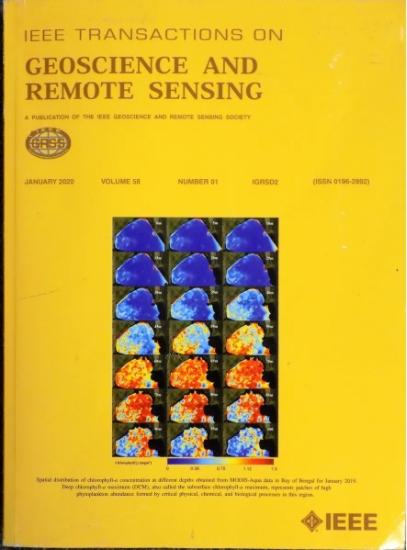Exploring Lightweight Structures for Tiny Object Detection in Remote Sensing Images
IF 7.5
1区 地球科学
Q1 ENGINEERING, ELECTRICAL & ELECTRONIC
IEEE Transactions on Geoscience and Remote Sensing
Pub Date : 2025-03-06
DOI:10.1109/TGRS.2025.3567345
引用次数: 0
Abstract
Detecting tiny objects in remote sensing images has been an intriguing yet challenging topic in remote sensing image processing. While significant progress has been made in many studies, most existing methods focus on improving the accuracy of tiny object detection without particular consideration for computational complexity, which restricts their applicability in resource-limited conditions. Therefore, this article aims to design a lightweight detection algorithm tailored for tiny objects in remote sensing images. First, we investigate the impact of the complexity of different components in deep learning-based object detection models on the accuracy of tiny object detection, including the backbone and detection head. Then, a dedicated backbone for tiny object detection is proposed, achieving competitive detection accuracy while remaining lightweight. Moreover, we propose a lightweight detection head that incorporates deformable convolution and optimize the channel dimension. Finally, we combine the above methods to introduce a lightweight network, lightweight tiny object detecection network (LTDNet), for tiny object detection in remote sensing images. Benefiting from the dedicated designs for the backbone and detection head specifically for tiny objects, the proposed method can achieve competitive detection accuracy with very low parameters and computational complexity. Extensive experiments are conducted on the artificial intelligence (AI)-TODv2 and learning vision and remote sensing (LEVIR)-Ship datasets, and the results demonstrate the effectiveness of our proposed method. Specifically, the proposed method achieves 54.6% AP50 on the AI-TODv2 dataset with only 4.85 M parameters and 38.19 G floating-point operations (FLOPs). The code will be released soon on the GitHub repository:探索用于遥感图像中微小目标检测的轻量化结构
遥感图像中微小目标的检测一直是遥感图像处理中一个有趣而又具有挑战性的课题。虽然许多研究取得了重大进展,但现有的方法大多侧重于提高微小目标检测的精度,没有特别考虑计算复杂度,这限制了它们在资源有限条件下的适用性。因此,本文旨在设计一种针对遥感图像中微小物体的轻量化检测算法。首先,我们研究了基于深度学习的目标检测模型中不同组件的复杂性对微小目标检测精度的影响,包括主干和检测头。然后,提出了一种用于微小目标检测的专用主干,在保持轻量级的同时实现了具有竞争力的检测精度。此外,我们提出了一种轻量级的检测头,它结合了可变形卷积并优化了通道尺寸。最后,我们结合上述方法,引入了一种用于遥感图像中微小目标检测的轻量级网络——轻量级微小目标检测网络(LTDNet)。该方法采用了专门针对微小目标的检测骨干和检测头的设计,可以在极低的参数和计算复杂度下实现具有竞争力的检测精度。在人工智能(AI)-TODv2和学习视觉与遥感(LEVIR)-船舶数据集上进行了大量的实验,结果表明了我们提出的方法的有效性。具体而言,该方法在AI-TODv2数据集上仅使用4.85 M个参数和38.19 G浮点运算(FLOPs), AP50达到54.6%。代码将很快在GitHub存储库上发布:https://github.com/dyl96/LTDNet
本文章由计算机程序翻译,如有差异,请以英文原文为准。
求助全文
约1分钟内获得全文
求助全文
来源期刊

IEEE Transactions on Geoscience and Remote Sensing
工程技术-地球化学与地球物理
CiteScore
11.50
自引率
28.00%
发文量
1912
审稿时长
4.0 months
期刊介绍:
IEEE Transactions on Geoscience and Remote Sensing (TGRS) is a monthly publication that focuses on the theory, concepts, and techniques of science and engineering as applied to sensing the land, oceans, atmosphere, and space; and the processing, interpretation, and dissemination of this information.
 求助内容:
求助内容: 应助结果提醒方式:
应助结果提醒方式:


